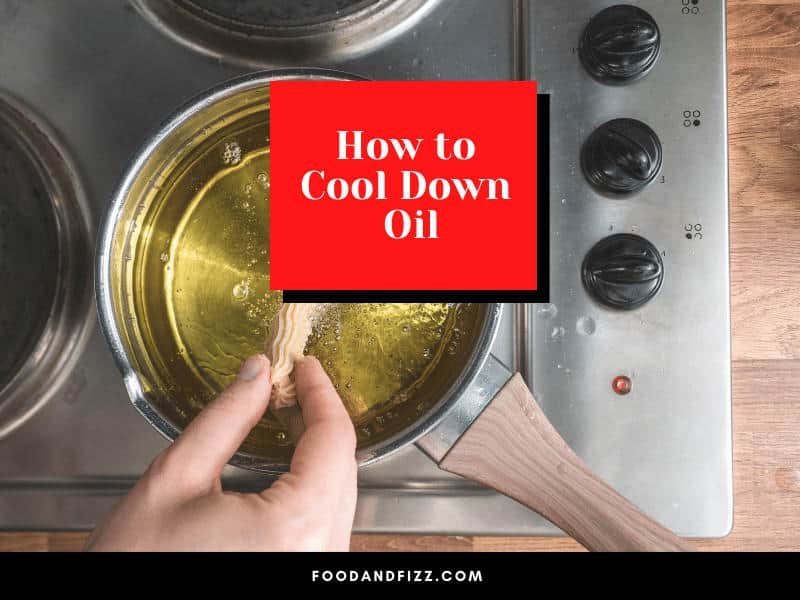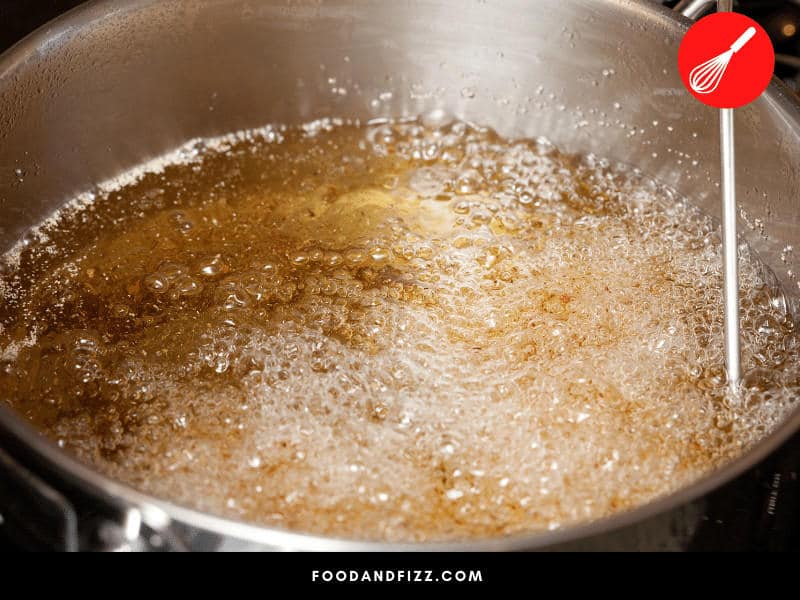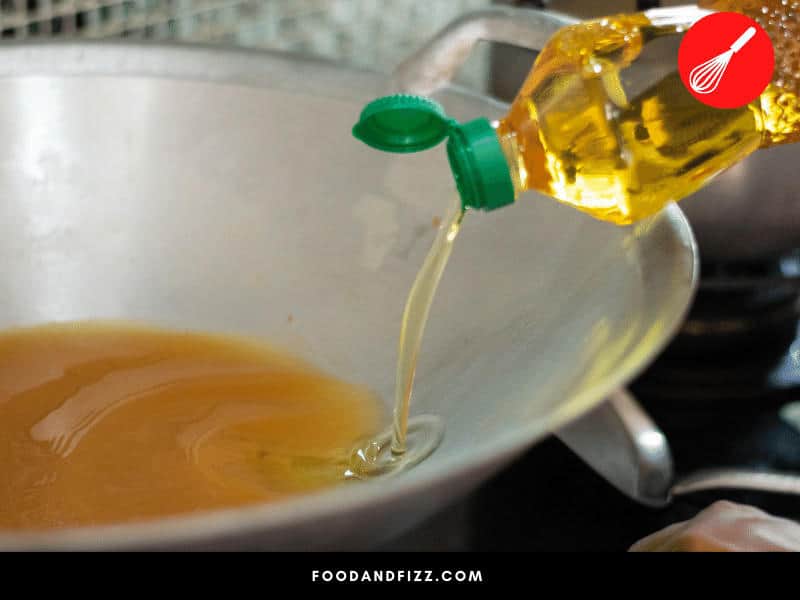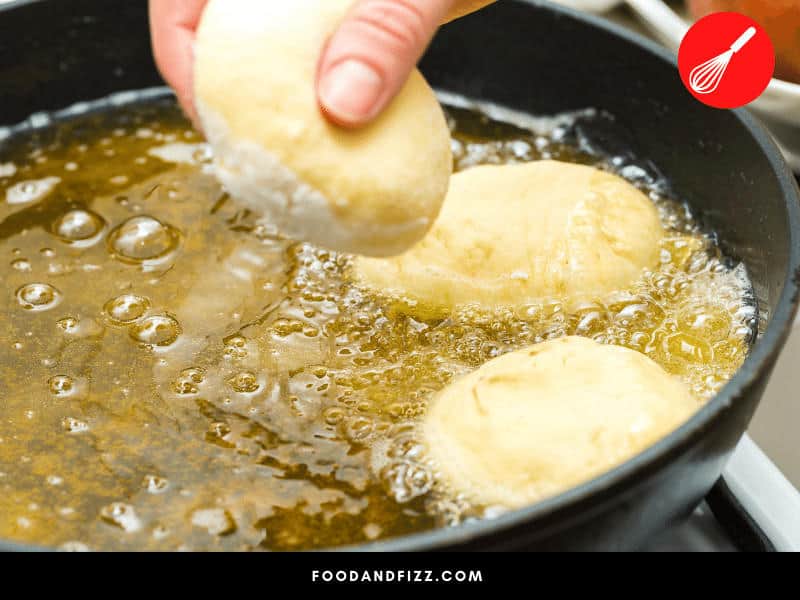All over the world, people love deep-fried food, whether savory or sweet, battered or bare. But if you’re familiar with this cooking method, you’ll know that boiling oil takes absolute ages to cool down once it’s hot and can be dangerous if not handled correctly.
Are there any ways around having to wait a few hours for oil to reach room temperature? I’ve done some research and come up with some answers for you.
How to Cool Down Oil?
The best way to cool down hot cooking oil is to transfer it into a heat- and cold-proof container that you submerge into a larger container filled with water. Once nestled in the water, you can add ice all around the outside of the oil dish to speed up the cooling. To cool down hot oil while you’re still in the cooking process, you can gradually and carefully add small amounts of cool oil to the hot oil to bring down its temperature.

Cautions Around Cooking With Frying Oil
Frying oil gets intensely hot and is ideal for cooking at a temperature of 350F (180C).
But because of its high heat levels, it can also really hurt or scald you if it makes contact with your skin.
To prevent injury, you should always handle oil with the utmost care.
Wear oven mitts or gloves to protect your hands and wrists from any potential splatter.
Also, use appropriate cooking utensils for transferring your fried goods into and out of the oil.
Finally, make sure not to overfill the fryer, pot, or pan you’re planning to use with your oil.
This can result in overflow making contact with your stove plates, which can turn into flames.

Why Is It Important to Cool Down Frying Oil?
There are a few reasons why we cool down cooking oil.
One is to make sure it’s not too hot for the food we want to cook, which will result in crispy outsides and undercooked insides.
Another reason is to protect the integrity of our cookware, like pots and pans.
Because hot oil can take over two hours to cool down, it’s usually left standing in the pot it was heated in.
This causes it to oxidize, which spoils the oil and turns it slightly rancid, meaning you won’t be able to reuse it.
It also makes everything really greasy and harder to clean.
Proper storage practices will ensure you can reuse your oil, so it’s important to get it out of your cooking pot and into a clean, safe container as soon as possible.

How to Cool Down Hot Oil
You can cool down hot oil in a few simple steps.
First, transfer your oil into a container that is both heat- and cold-proof, so it doesn’t crack or warp when it makes contact with high and low temperatures.
Be very careful when doing this and work slowly.
Hot oil is challenging to handle, and you should never try to touch or transfer it into a different container unless you’re wearing gloves or mitts.
Be especially careful not to pour it too quickly so that it splatters.
Once you have it safely transferred, place the oil container into a larger dish filled with water.
You want to avoid the water making any contact with the oil.
These two substances famously disagree, and water will cause hot oil to spit, potentially hurting you.
When the oil container is safely submerged, add some ice blocks to the water all around it.
Ice will speed up the cooling process, and your oil should be at room temperature in under thirty minutes (depending on the quantity).
How to Store Leftover Oil
There’s no need to discard your frying oil if you’ve cooled it down correctly.
However, equally important is how you store it.
Leftover oil should be kept in a sealed, clean container in a cool, dry place.
Minimize any exposure to air that can cause oxidization over time.

How to Cool Hot Oil While Frying
Sometimes while we’re in the process of cooking, we may overshoot and get our oil a little too hot.
You can tone down the temperature in one of two ways.
First off, adding cold food to hot oil immediately brings down the heat.
This can play to your favor if your oil is a little too hot.
However, if your oil is at the right temperature, don’t add in too many cold or frozen components at once, as they won’t go crispy but greasy instead.
You can also cool down hot oil by adding in some additional frying oil to bring down its overall heat.
I recommend you do this slowly and gradually to prevent splatter and keep an eye on the temperature using a candy thermometer.
Alternatively, take your pot or pan off the heat and lower the temperature until it’s had a chance to cool down a bit.

Conclusion to How to Cool Down Oil
Deep-fried food is infinitely comforting, and sometimes that’s all you want. However, the cooling down process and subsequent clean-up can be a bit painful and labor-intensive, especially once a greasy coating has started to build up.
Cooling down and storing your frying oil helps to alleviate waste and makes it easier to clean your dishes after the fact. Just always be careful when working with hot oil to prevent burning or scalding your skin.
Frequently Asked Questions on How to Cool Down Oil?
How Do You Dispose of Old Frying Oil?
The best way to dispose of the oil you can’t use anymore is to transfer it into a sealable, non-recyclable container (like an old milk carton) and throw it in your rubbish. Oil should always be appropriately cooled before you discard it. Never throw it down the drain, as it can cause blockages that wreak havoc on your plumbing systems.
What is the Best Oil for Deep-Frying?
Vegetable oil (like sunflower oil, corn oil, or canola oil) is best for deep-frying. These oils are multipurpose and have a neutral taste that won’t impact the flavor of your food.

